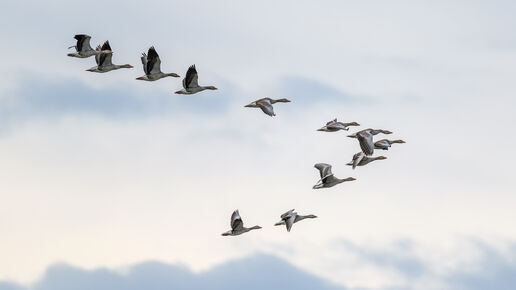Avian influenza: EFSA recommends increased protection of farms from wild birds
While the situation in poultry has eased over the summer, highly pathogenic avian influenza (HPAI) virus continued to affect seabirds in Europe, mostly along coastlines. As the autumn migratory season starts, the protection of poultry and other farmed animals from wild birds should be prioritised. Biosecurity should be enhanced in fur animal farms.

Between 24 June and 1 September 2023, HPAI outbreaks were reported in domestic (25) and wild (482) birds across 21 European countries, according to the latest report on avian influenza by the European Food Safety Authority (EFSA), the European Centre for Disease Prevention and Control (ECDC), and the EU reference laboratory (EURL).
Wild and domestic carnivores continued to be the most affected mammal species A subdivision of the genus, a species is a group of closely related and similar-looking organisms; for example, in the case of Homo sapiens (humans), the second part of the name (sapiens) represents the species. with Finland reporting 26 outbreaks in fur farms keeping America mink, red and Arctic foxes, and common raccoon. The most likely source of introduction was contact with wild gulls, but between-farm transmission cannot be completely excluded. Within-farm transmission occurred with some contact animals not showing any clinical signs of infection.
ECDC assessed that the risk of infection with HPAI virus in Europe remains low for the general population Community of humans, animals or plants from the same species., and low to moderate for occupationally or otherwise exposed people to infected birds or mammals (wild or domestic). To further reduce the risk of infection, experts recommend avoiding exposure Concentration or amount of a particular substance that is taken in by an individual, population or ecosystem in a specific frequency over a certain amount of time. to dead or diseased seabirds or mammals.
Now available: improved Bird Flu Radar
From today on an improved version of EFSA’s Bird Flu Radar is available to everyone. New features allow users to explore weekly predictions of the probability The likelihood that a particular event will occur or that a measured value will fall within a particular range. of HPAI introduction in wild birds. Users may subscribe to receive weekly alert emails for their areas of interest. The Bird Flu Radar is closely integrated with EFSA’s Migration Mapping Tool, which shows the movements and abundance of 50 wild bird species, mainly waterbirds, in which avian influenza has been reported.
Links to science
How to contact us
EFSA Media Relations Office
Tel. +39 0521 036 149
E-mail: press [at] efsa.europa.eu (Press[at]efsa[dot]europa[dot]eu)
(Only if you are a member of the press)
Ask a Question Service
You have a question about EFSA’s work? Contact our Ask a Question service!